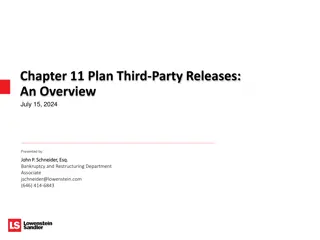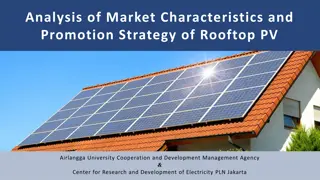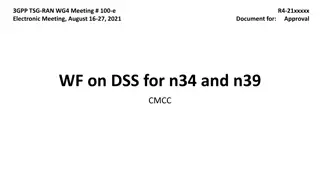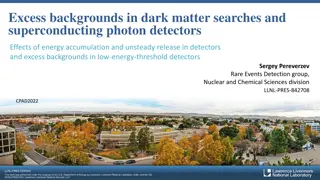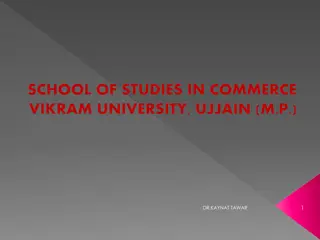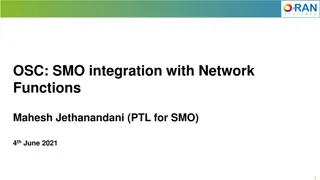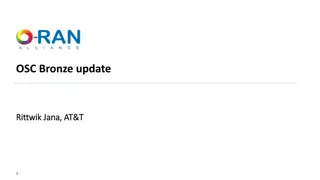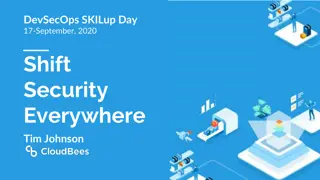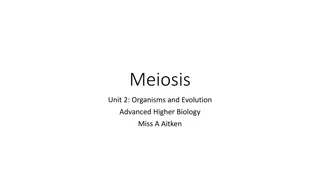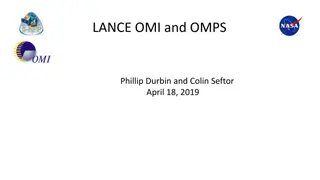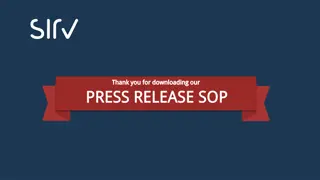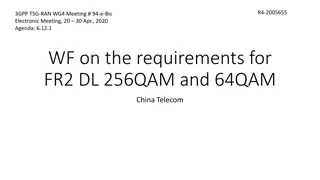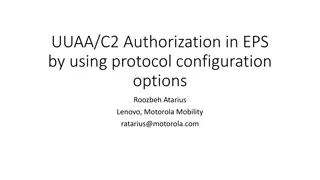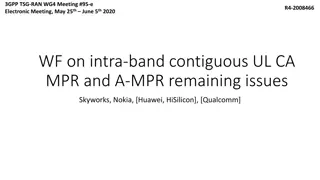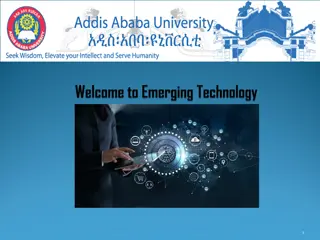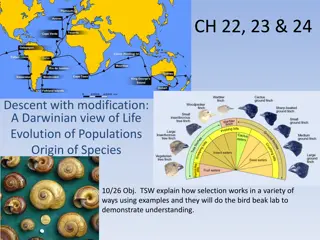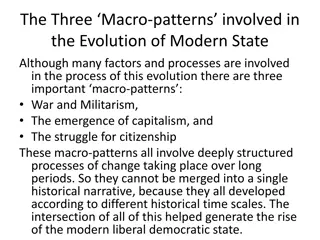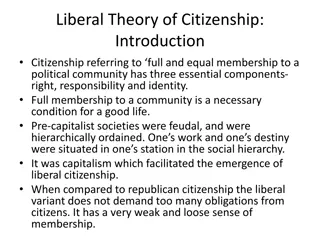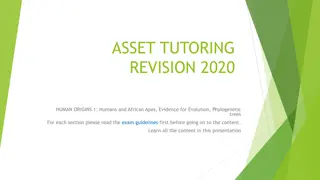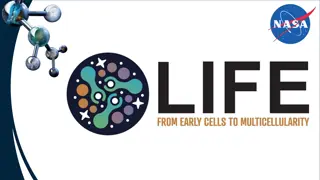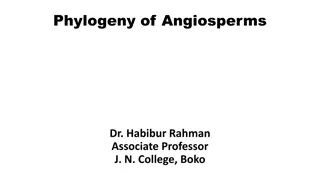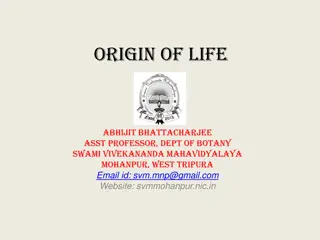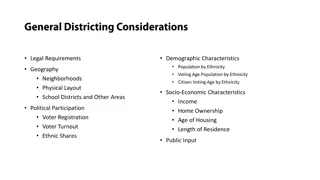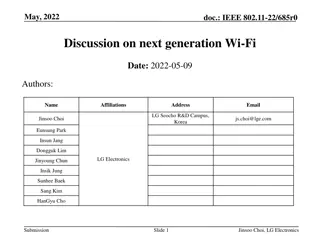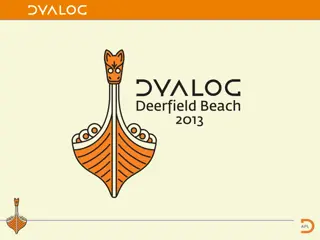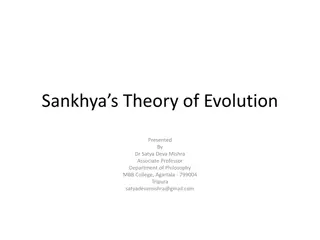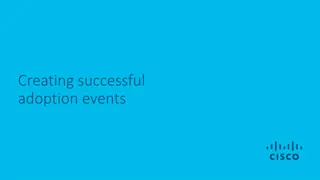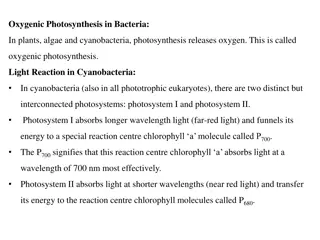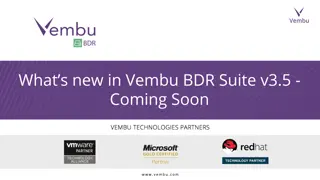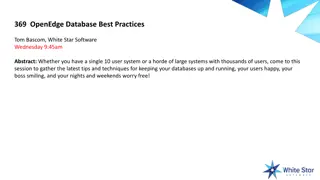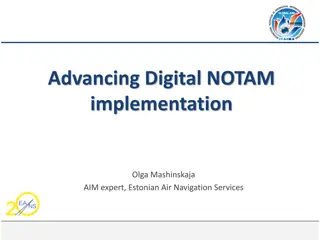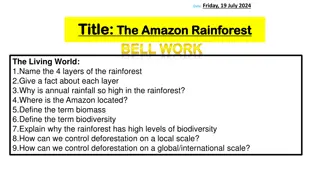A Comprehensive Guide to Jakarta EE Evolution and Future Releases
Jakarta EE, with key stakeholders like Oracle, IBM, and Red Hat, has evolved into a vendor-neutral platform under Eclipse Foundation governance. Learn about its importance, evolution from Java EE, and upcoming releases like Jakarta EE 10. Discover the transition of specifications to Jakarta namespace and opportunities for community contribution in this pivotal ecosystem.
Download Presentation

Please find below an Image/Link to download the presentation.
The content on the website is provided AS IS for your information and personal use only. It may not be sold, licensed, or shared on other websites without obtaining consent from the author. Download presentation by click this link. If you encounter any issues during the download, it is possible that the publisher has removed the file from their server.
E N D
Presentation Transcript
Contributors Guide to the Jakarta EE 10 Galaxy Reza Rahman Jakarta EE Ambassador, Author, Blogger, Speaker reza_rahman@lycos.com @reza_rahman
Jakarta EE Java EE transitioned from JCP to Eclipse Foundation as Jakarta EE Open governance, open source, open compatibility testing Well defined specification process, clear IP flow, vendor-neutral open collaboration, level playing field Key stakeholders maintained if not expanded including Oracle, IBM, Red Hat, Payara and VMware Community participation and contribution key https://jakarta.ee
The Importance of Jakarta EE Jakarta EE is an important part of the Java ecosystem and cloud 25-35% of Java applications run on Jakarta EE application servers WebLogic, WebSphere/Liberty, JBoss EAP, WildFly, Payara 70-80% of Java applications depend on at least one or more Jakarta EE APIs Tomcat, Hibernate, ActiveMQ, Jetty, MicroProfile, Spring, Quarkus A healthy ecosystem continues to evolve, with a stable Jakarta EE core Quarkus and MicroProfile are enjoying a notable increase in interest 2020 Jakarta EE Developer Survey: https://outreach.jakartaee.org/2020-developer-survey-report
Jakarta EE Evolution EJB 3, JPA, JSF, JAXB, JAX-WS Servlet, JSP, EJB, JMS CMP, JCA JAX-WS J2EE 1.3 J2EE 1.2 J2EE 1.4 Java EE 5 JPE WebSocket, JSON, Concurrency, Batch, pruning Profiles, CDI, JAX-RS, Bean Validation HTTP/2, SSE, Security, pruning Open-source governance Jakarta EE 8 Java EE 7 Java EE 6 Java EE 8 Namespace transition Community innovation Jakarta EE 10 Jakarta EE 9
Jakarta EE 9/9.1 Jakarta EE 9 moves all relevant specifications from javax to jakarta namespace Remove older technologies Primarily aimed for ecosystem to adapt to Jakarta Some implementations are in place already You should begin testing! Jakarta EE 9.1 will likely be released soon after adapting to Java SE 11 as opposed to Java SE 8 Your contribution is welcome and needed to get work done on time! Jakarta EE 10 will likely be delivered some time in 2021
Ambassadors Jakarta EE 10 Contribution Guide https://docs.google.com/document/d/1uZFBoIujXCc- gQhCzh_ZdlKEsrsV0yVVIHzBTI3usF8/edit?usp=sharing
Jakarta EE 10 Themes CDI Alignment @Asynchronous, @Schedule, @Lock, @MaxConcurrency in Concurrency, @MessageListener in Messaging, @RolesAllowed, @RunAs in Security Better CDI support in REST, Batch, Concurrency Java SE Alignment CompletableFuture in Concurrency Bootstrap APIs for REST, Messaging Decoupling TCKs, modularization Closing standardization gaps Security, Batch, Concurrency, Persistence, Transactions Microservices Profile Innovation NoSQL, MVC, Configuration
Jakarta Concurrency CDI based, modernized equivalents for @Asynchronous, @Schedule, @Lock Adding @MaxConcurrency Adding @ManagedExecutorServiceDefinition Add support for CompletableFuture CDI context propagation
@Asynchronous + CompletableFuture @Asynchronous public CompletableFuture<Confirmation> processPayment(Order order) { ... Confirmation status = ...; return CompletableFuture<Confirmation>.completedFuture(status); } paymentService .processPayment(order) .thenAccept( confirmation -> System.out.println(confirmation));
CDI Based @Lock @ApplicationScoped @Lock(READ) public class CountryInfoService { ... public List<String> getStates(String country) { return countryStatesMap.get(country); } ... @Lock(WRITE) public void setStates(String country, List<String> states) { countryStatesMap.put(country, states); } }
@ManagedExecutorServiceDefinition + CompletableFuture @ManagedExecutorServiceDefinition( name = java:app/concurrency/MyExecutorService , min-threads= 5 , max-threads= 25 , keepalive-time= 5000 , hung-task-threshold= 60000 ) @Resource(name = "java:app/concurrency/MyExecutorService") private ManagedExecutorService executor; ... CompletableFuture<Long> stage = executor.newCompletableFuture() .thenApply(function) .thenAccept(consumer); stage.completeAsync(supplier);
@Service CDI Stereotype @ApplicationScoped @Transactional @MaxConcurrency(DEFAULT) @Lock(READ) @Stereotype @Target(TYPE) @Retention(RUNTIME) public @interface Service {} @Service public class DefaultBookingService implements BookingService {
Jakarta Messaging CDI based, modernized @MessageListener Standalone bootstrap API AMQP interoperability Kafka interoperability
@MessageListener Example @ApplicationScoped @MaxConcurrency(10) public class HandlingEventRegistrationAttemptConsumer { @MessageListener( destinationLookup="jms/HandlingEventRegistrationAttemptQueue", selector="source = 'mobile'", batchSize=10, retry=5, retryDelay=7000, orderBy=TIMESTAMP) public void onEventRegistrationAttempt( HandlingEventRegistrationAttempt... attempts) { ... } }
Bootstrap API for Jakarta Messaging JmsContainer container = JmsContainerFactory.newInstance(); ... JMSContext jmsContext = container.getJmsContext(); Destination handlingEventQueue = container.getDestination( jms/HandlingEventRegistrationAttemptQueue true); ... jmsContext.createProducer() .setDisableMessageID(true) .setDisableMessageTimestamp(true) .setStringProperty("source", source) .send(handlingEventQueue, attempt); ... container.close();
Jakarta Security CDI based, modernized equivalents for @RolesAllowed and @RunAs OAuth 2.0, OpenID Connect, JWT support EL enabled authorization annotation
Modern Security Providers @OpenIdConnectIdentityStoreDefinition( clientId= ${client.id} , clientSecret= ${client.secret} , discoveryEndpoint= https://.../openid-configuration , userNameAttribute= preferred_username ) @JwtIdentityStoreDefinition( jwksUri="https://.../keys", issuer="https://.../${tenant.id}/v2.0", audiences="${client.id}", userNameAttribute="preferred_username") @OAuth2IdentityStoreDefinition( clientId="${client.id}", clientSecret="${client.secret}", tokenEndpointAuthMethod="client_secret_post", authorizationEndpoint="https://.../authorize", userNameAttribute="preferred_username", website="https://.../authentication/")
EL Enabled Authorization Annotation @Authorized("hasRoles('Manager') && schedule.officeHours") public void transferFunds(); @Authorized("hasAttribute('directReports', employeeId)") public double getSalary(long employeeId);
Other Possibilities Jakarta Persistence Make persistence.xml optional/empty marker More SQL features in JPQL such as sub-selects JCache as a second-level cache provider Jakarta REST @Inject instead of @Context Standalone bootstrap API Jakarta Batch CDI alignment Java job definition API as alternative to XML Jakarta Transactions Standardize common performance optimizations
Job Definition API Example Job job = new JobBuilder(jobName).property("jobk1", "J") .listener("jobListener1", new String[]{"jobListenerk1", "#{jobParameters['jobListenerPropVal']}"}, .step(new StepBuilder(stepName) .properties(new String[]{"stepk1", "S"}, new String[]{"stepk2", "S"}) .batchlet(batchlet1Name, new String[]{"batchletk1", "B"}, new String[]{"batchletk2", "B"}) .listener("stepListener1", stepListenerProps) .stopOn("STOP").restartFrom(stepName).exitStatus() .endOn("END").exitStatus("new status for end") .failOn("FAIL").exitStatus() .nextOn("*").to(step2Name) .build()) ... .build();
Jakarta MVC Standard action-based web framework Jakarta Faces continues to evolve separately Model CDI, Bean Validation View Facelets, Jakarta Server Pages Controller Majority of work here Based on Jakarta REST
Jakarta MVC Example @Controller @Path("/") @View("my-index.xhtml") public class Bookstore { @Inject private Models model; @Inject private BookService service; ... @GET public void index() { ... model.put( books , books); } }
Jakarta NoSQL Specification for accessing NoSQL databases Layers of flexible abstractions Communication API akin to JDBC Mapping/template API akin to JPA Repository API akin to DeltaSpike/Spring Data API variants by NoSQL taxonomy Key-value pair, column family, document and graph Bean validation, externalized configuration
Jakarta NoSQL Example @Entity public class Order { @Id private long id; @Column @NotBlank private String description; @Column @NotEmpty private List<OrderLine> orderLines; @Column @NotNull private Customer customer; @Column @NotNull private Address address; template.insert(order); ... DocumentQuery query = select().from("Order") .where("description").like("^Pinball").build(); logger.info("Found orders for pinball: " + template.select(query).count());
Configuration Externalizing application configuration Built-in stores Property files, Java system properties, environment variables Extensible stores Kubernetes secrets Secure cloud storage NoSQL stores @Inject into code Reference in EL Reference in XML MicroProfile alignment
Configuration Examples @Inject @ConfigProperty(name = admin.group , defaultValue= admin ) private String adminGroup; persistence.provider=org.hibernate.ejb.HibernatePersistence persistence.datasource=java:app/jdbc/CargoTrackerDatabase persistence.schema.generation.database.action=create <data-source> <name>java:app/jdbc/CargoTrackerDatabase</name> <class-name>org.apache.derby.jdbc.EmbeddedDriver</class-name> <url>jdbc:derby:${temp.dir}/cargo-tracker-database</url> </data-source>
Ways of Contributing Follow Jakarta EE technologies that interest you and share opinion https://jakarta.ee/connect/mailing-lists/ Advocate for a specific change or feature https://jakarta.ee/projects/ Help implement a change in API, specification, TCK or implementation Sign Eclipse Contributor Agreement https://www.eclipse.org/legal/ECA.php Becoming a committer comes much later Engage an Ambassador if needed https://jakartaee-ambassadors.io
Beyond Jakarta EE 10 Persistence alignment with Java SE Records JSON schema support Reactive/NIO support Servlet, REST, MVC Persistence - requires reactive/NIO JDBC, ideally in Java SE Making modularity and embedded runtimes required
Summary Jakarta EE 8, 9, 9.1 very significant for the future of Java Many possible important changes for Jakarta EE 10 and beyond The time to get involved is now!
Resources Jakarta EE Community alias https://accounts.eclipse.org/mailing-list/jakarta.ee-community Jakarta EE Twitter handle @JakartaEE Jakarta Tech Talks https://www.meetup.com/jakartatechtalks_


